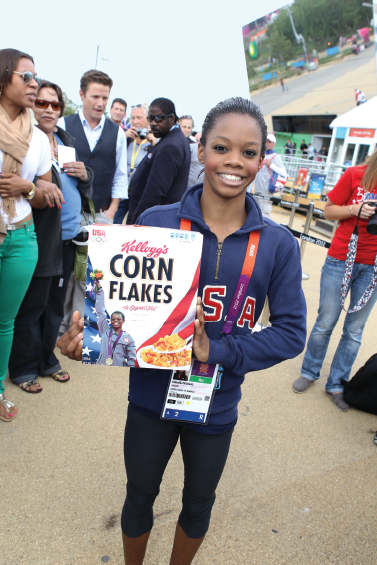Conventional Persuasive Strategies
“In some ways, you could almost consider yourself lucky if people note your ads. Most ads trigger no reaction at all.”
THE FINANCIAL BRAND, 2011
One of the most frequently used advertising approaches is the famous-person testimonial, in which a product is endorsed by a well-known person. Famous endorsers include Justin Timberlake for Bud Light, Taylor Swift for Diet Coke, and Beyoncé for Pepsi. Athletes earn some of the biggest endorsement contracts. For example, Chicago Bulls player Derrick Rose has a $260 million, fourteen-year deal with Adidas, the same shoe company that has a $160 million deal with now-retired soccer star David Beckham. Tiger Woods remains one of the leading endorsers, despite his personal scandals in 2009. Although some sponsors—including Accenture, Gatorade, and Gillette—dropped him, Nike, Rolex, Electronic Arts (EA), and other companies stayed with him in deals that still total up to $80 million a year.
Another technique, the plain-folks pitch, associates a product with simplicity. Over the years, Volkswagen (“Drivers wanted”), General Electric (“We bring good things to life”), and Microsoft (“I’m a PC and Windows 7 was my idea”) have each used slogans that stress how new technologies fit into the lives of ordinary people. In a way, the Facebook technique of sponsored stories fits this model since it depends on friends’ endorsements of products rather than the words or images of stars or athletes.

Olympic glory comes not just with gold medals, but endorsement deals. Gabrielle Douglas, gold-medal winner in gymnastics at the 2012 Summer Olympics, appeared on a special-edition box of Kellogg’s Corn Flakes. Nintendo also announced that she would be part of an ad campaign promoting its game New Super Mario Bros. 2.
By contrast, the snob-appeal approach attempts to persuade consumers that using a product will maintain or elevate their social status. Advertisers selling jewelry, perfume, clothing, and luxury automobiles often use snob appeal. For example, the pricey bottled water brand Fiji ran ads in Esquire and other national magazines that said “The label says Fiji because it’s not bottled in Cleveland”—a jab intended to favorably compare the water bottled in the South Pacific to the drinking water of an industrial city in Ohio. (Fiji ended up withdrawing the ad after the Cleveland Water Department released test data showing that its water was more pure than Fiji water.)
Another approach, the bandwagon effect, points out in exaggerated claims that everyone is using a particular product. Brands that refer to themselves as “America’s favorite” or “the best” imply that consumers will be “left behind” if they ignore these products. A different technique, the hidden-fear appeal, plays on consumers’ sense of insecurity. Deodorant, mouthwash, and shampoo ads frequently invoke anxiety, pointing out that only a specific product could relieve embarrassing personal hygiene problems and restore a person to social acceptability.
A final ad strategy, used more in local TV and radio campaigns than in national ones, has been labeled irritation advertising: creating product-name recognition by being annoying or obnoxious. Although both research and common sense suggest that irritating ads do not work very well, there have been exceptions. In the 1950s and 1960s, for instance, an aspirin company ran a TV ad illustrating a hammer pounding inside a person’s brain. Critics and the product’s own agency suggested that people bought the product, which sold well, to get relief from the ad as well as from their headaches. On the regional level, irritation ads are often used by appliance discount stores or local car dealers, who dress in outrageous costumes and yell at the camera.